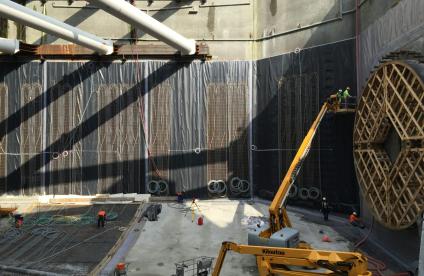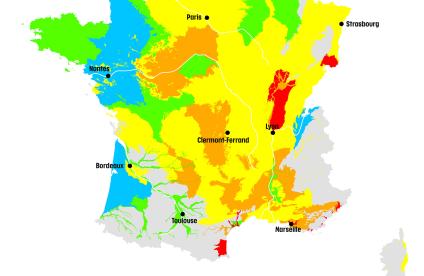SPICy: system for forecasting floods during cyclone events
Transcription
Reunion is a unique island in the Indian Ocean. Its young volcanism, one of the world's most active, and humid tropical climate have resulted in a complex morphology exposed to natural hazards such as tropical cyclones. The research project SPICY, supported by the ANR, tackled the issue of cyclone-induced floods to meet the operational needs of Reunion's state and local services. The BRGM and its partners - the French Met Office, the LACY, BRL Ingénierie and the Ecole des Mines d'Alès - worked together on a cyclone-induced marine and river floods forecasting system and its integration in Reunion's crisis-management initiatives. The project is based on technological building blocks, with both applied and upstream development.
Our main contribution to SPICY was the probabilistic approach to wind and wave forecasts, which can be translated into tools for wave-threshold exceedances and marine submersion. The idea is to try to make all of these tools as operational as possible so they can be used in times of crisis, at the approach of a cyclone.
The BRGM's role in SPICY was to explore different methods of transposing marine forecasts to predict coastal flooding. We had a two-tier approach. First we produced impact atlases, to rapidly identify potentially impacted areas. And we also worked on computation-time optimization in order to provide real-time coastal-flooding forecasting.
Our role in the SPICY project was to manage all aspects relating to hydrology and river inundation. Using meteorological forecasts, we can predict and anticipate water flow in rivers. The next step is to determine the impact of these flows: river outflow and inland flooding and try to anticipate this in relation to the phenomena.
Applied developments were tested in two series of exercises, to assess their relevance in terms of anticipation and their compatibility with operational crisis units. The October 2017 exercise on Reunion Island involved several levels of the ORSEC rescue organization: the municipalities of Saint-Paul and Sainte-Suzanne plus EMZPCOI.
The Ecole des Mines has spent 2 days in these municipalities organizing and overseeing the crisis exercises with the municipalities' crisis management teams. Sainte-Suzanne and Saint-Paul, yesterday and today, tackled a crisis exercise involving an approaching cyclone and many disruptive events. Their crisis-management units had to deal with these events and take the necessary decisions to protect the local population.
For this, forecast tools based on a fictitious scenario were available on a platform, including wind and wave exceedance probability tools. Saint-Paul and Sainte-Suzanne tested the graduated response plans devised by the Ecole des Mines d'Alès. Thanks to these complementary tools, action plans can address increasing levels of potential impact. EMZPCOI tested its anticipation cell with the support of Météo-France, DEAL and its hydrology monitoring unit, the BRGM, the Highway Directorate and the Departmental Fire and Rescue Service.
The difficulty of the exercise for us was encountering the anticipation unit for the very first time. Learning about everyone's role and about the various SPICY tools developed for the occasion.
The technological building blocks developed in SPICY were presented at a seminar of scientists, State services and the two municipalities. Participants reviewed the work undertaken thus far and identified possible applications, barriers and future research required.
It's an interesting approach. It enables us to distinguish between what is at a nascent stage, what is a bit more mature and what is close to being the operational application. There is still much work to be done, but we can focus on these building blocks separately.
SPICY highlights what we can do in the field, the responsibility of DEAL, the municipalities, EMZPCOI and the Prefect.
We are well aware of our responsibilities. That's why it seemed interesting to contribute and come, if you like, under scrutiny to see what works.
This project really echoes what we do on a daily basis. Let's build the highway to facilitate communication. The sole aim is to meet together our common objectives: the population's well-being, to render assistance. Everyone in this room is working in the same direction, to improve the conditions of our fellow citizens. That is, we are all working for the public good.






